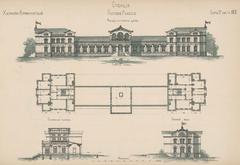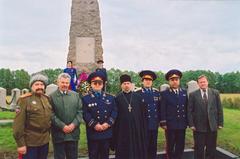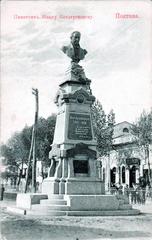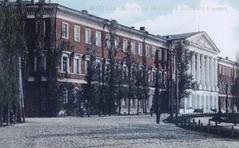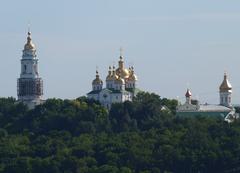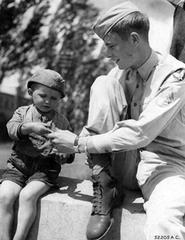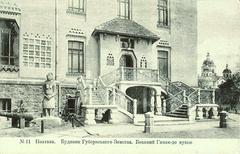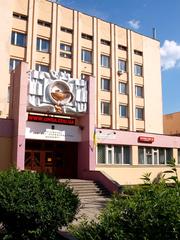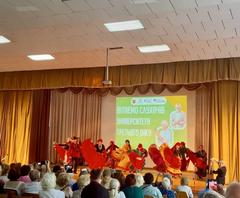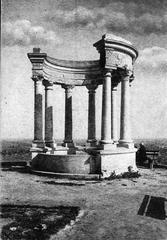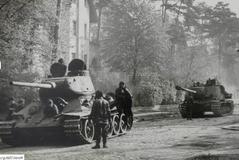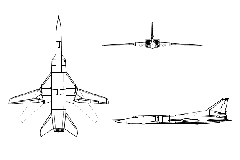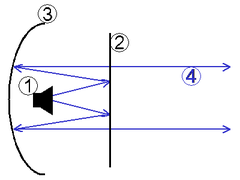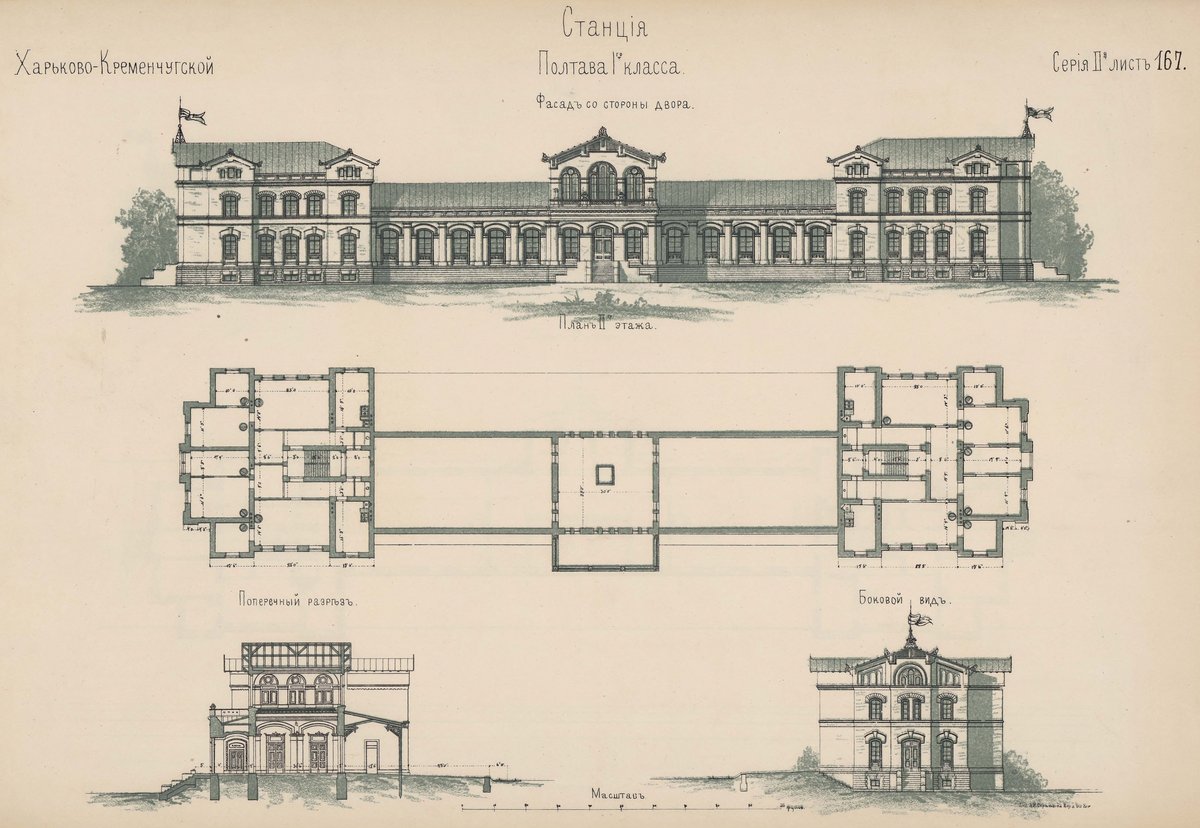
Poltava-Pivdenna Visiting Hours, Tickets, and Historical Sites Guide
Date: 14/06/2025
Introduction: Discover Poltava’s Heritage and Modern Gateway
Poltava, one of Ukraine’s oldest cities, boasts a captivating blend of medieval history, cultural landmarks, and contemporary urban life. Renowned for its role in the pivotal 1709 Battle of Poltava, the city today is a dynamic center for education, industry, and tourism. At its heart stands the Poltava-Pivdenna railway station, a key transportation hub established in the early 20th century, seamlessly connecting Poltava to Kyiv, Kharkiv, Dnipro, and beyond. This comprehensive guide will help you plan your visit, covering the city’s remarkable historical sites, Poltava-Pivdenna station visiting hours and tickets, travel tips, and local attractions. For up-to-date schedules, tickets, and city tours, resources such as proizd.ua, discover-ukraine.info, and poltavawomen.com are invaluable.
Table of Contents
- Early Origins and Medieval Development
- Shifting Sovereignties: Lithuania, Poland, and Russia
- The Battle of Poltava and Its Aftermath
- 18th and 19th Century Growth
- Industrialization and Modernization
- 20th Century Turmoil and Recovery
- Contemporary Significance and Heritage
- Architectural and Cultural Landmarks
- Frequently Asked Questions (FAQs)
- Summary & References
Early Origins and Medieval Development
Poltava’s roots stretch back over a millennium. The settlement, possibly known as “Ltava” in the Hypatian Chronicle, developed near the Vorskla River (discover-ukraine.info). The region, integral to Kievan Rus’, was a strategic waypoint for trade and military campaigns. In the 12th century, Prince Igor Sviatoslavich’s pursuit of Cuman Khans near Ltava is well-documented (poltavawomen.com). The Mongol invasion in the 13th century devastated the area, but by the 15th century, Poltava re-emerged as a fortified town, enduring repeated attacks yet persisting under the stewardship of notable local families.
Shifting Sovereignties: Lithuania, Poland, and Russia
Poltava’s governance shifted with the tides of Eastern European history. Initially part of the Grand Duchy of Lithuania, it was ceded to the Polish-Lithuanian Commonwealth following the Union of Lublin in 1569. By the 17th century, Poltava was a center of Ukrainian Cossack resistance during the Khmelnytsky Uprising, eventually falling under Russian dominion—a transition that would shape its future (discover-ukraine.info, poltavawomen.com).
The Battle of Poltava and Its Aftermath
The 1709 Battle of Poltava was a watershed in European history. Tsar Peter I’s defeat of Charles XII’s Swedish army not only marked the decline of Swedish power but established Russian supremacy in the region. The victory is immortalized by the city’s neoclassical Round Square and the Glory Monument, built to commemorate the battle’s centenary (discover-ukraine.info).
18th and 19th Century Growth
The post-battle era brought economic prosperity and cultural flourishing. Poltava became part of the Novorossiysk Governorate in 1770, welcoming Greek settlers and developing into a hub for trade, manufacturing, and education. Notable constructions from this period include the Assumption Cathedral and the seven-domed Exaltation of the Cross Cathedral—iconic examples of Ukrainian Baroque (discover-ukraine.info). The city’s Museum of Local Lore, one of Ukraine’s oldest, stands as a testament to its enduring cultural legacy.
Visiting Hours & Tickets for Key Historical Sites
- Assumption Cathedral: Daily, 9:00 AM–6:00 PM; free entry.
- Exaltation of the Cross Cathedral: Daily, 8:00 AM–7:00 PM; donations welcome.
- Museum of Local Lore: Tuesday–Sunday, 10:00 AM–5:00 PM; closed Mondays. Admission: 50 UAH (~$2), with guided tours available (discover-ukraine.info).
Industrialization and Modernization
Rapid industrialization in the 19th and early 20th centuries transformed Poltava. Population growth, new institutions, and the arrival of the railway marked this era. Factories and fairs flourished, and the city’s educational and cultural landscape expanded (poltavawomen.com).
Poltava-Pivdenna Railway Station
Opened in 1901, Poltava-Pivdenna (Poltava-Southern) station revolutionized local connectivity, linking Poltava to Kharkiv, Kyiv, Dnipro, and southern Ukraine (proizd.ua). The station is celebrated for its early 20th-century architectural style and remains central to regional travel.
Station Details:
- Visiting hours: Daily, 5:00 AM–11:00 PM.
- Ticket counters: 6:00 AM–10:00 PM.
- Tickets: Purchase online or at the station; e-tickets accepted.
The station offers waiting rooms, restrooms, luggage storage, kiosks, and limited Wi-Fi. Accessibility features include ramps and reserved seating; assistance is available at ticket counters. Local transport options—buses, trolleybuses, and taxis—make onward travel easy (poltavawomen.com).
20th Century Turmoil and Recovery
Poltava endured occupation and destruction during World War II, but postwar restoration preserved its architectural gems. Under Soviet rule, the city became a military education center, training air force and missile officers (poltavawomen.com). Today, Poltava’s resilience is evident in its restored squares, cathedrals, and museums.
Contemporary Significance and Heritage
Modern Poltava is a thriving city of nearly 300,000 residents, renowned for its educational institutions, industries, and vibrant tourism scene (discover-ukraine.info). The city hosts football clubs, cultural festivals, and unique attractions like the Poltava Gravimetric Observatory and the Gogol-related heritage sites in Dikanka.
Practical Travel Tips for Visitors
- Best time to visit: May–September for outdoor events and pleasant weather.
- Accessibility: Major sites and the railway station are accessible.
- Language: Ukrainian is official; Russian is widely spoken. English speakers are less common.
- Currency: Ukrainian Hryvnia (UAH); credit cards accepted at most large venues.
- Safety: Poltava is generally safe; take usual precautions in public areas.
Architectural and Cultural Landmarks
- Round Square (Kruhla Ploshcha): Poltava’s neoclassical center, with the Glory Monument and vibrant urban life. Open to the public at all times (discover-ukraine.info).
- Cathedral Square (Ivanova Gora): Assumption Cathedral, Exaltation of the Cross Cathedral, and the Ivan Kotliarevsky Museum.
- White Pavilion (Rotunda of Nations’ Friendship): Panoramic city views; open daily, 9:00 AM–8:00 PM.
- Museum of Local Lore: Regional history, ethnography, and nature; Tuesday–Sunday, 10:00 AM–5:00 PM.
- Museum-Estate of Ivan Kotlyarevsky: Literary museum; Tuesday–Sunday, 10:00 AM–6:00 PM; tickets ~30 UAH.
- Poltava Museum of Aviation and Cosmonautics: Open daily except Mondays, 9:00 AM–5:00 PM; entry ~50 UAH.
Frequently Asked Questions (FAQs)
Q: What are Poltava-Pivdenna station visiting hours?
A: Daily, 5:00 AM–11:00 PM.
Q: How do I purchase train tickets?
A: Buy at station counters (6:00 AM–10:00 PM) or online (proizd.ua).
Q: Are museums and cathedrals accessible?
A: Major museums and the station are accessible; check with staff for assistance.
Q: Are guided tours available?
A: Yes, through local agencies and at main museums.
Q: What is the best time to visit Poltava?
A: Late spring to early autumn for festivals and comfortable weather.
Summary and Visitor Recommendations
Poltava offers a rich tapestry of history, culture, and modern hospitality. The Poltava-Pivdenna railway station is your convenient gateway to a city distinguished by its neoclassical architecture, museums, parks, and monuments. Plan your visit by checking train schedules, booking tickets in advance, and considering guided tours for deeper insight. Use the Audiala app for audio tours and real-time travel updates.
Whether you’re drawn by the city’s medieval origins, the legacy of the Battle of Poltava, or its contemporary cultural scene, Poltava is an essential destination in Ukraine’s heartland (discover-ukraine.info, proizd.ua, poltavawomen.com).
References and External Links
- Discover Ukraine – Poltava
- Poltava-Pivdenna Railway Station – Wikimedia Commons
- Poltava Train Schedules and Tickets – Proizd.ua
- Official Poltava Tourism Portal
- Poltava Women: History and Travel Tips
- Trola: Poltava Itineraries
